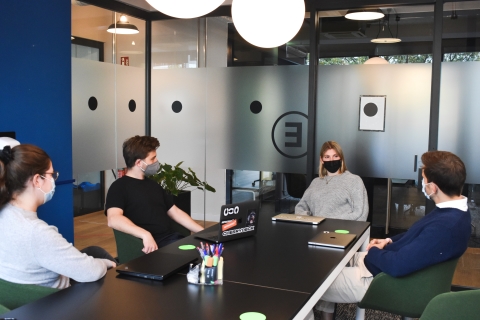
Among all the responsibilities that managers have, one of the most important is their focus on employee wellbeing. In the past year, people leaders have supported their staff through a lot of ups, downs and uncertainties. With the potential of returning to the workplace on the horizon, managers need to be mindful that some of their team members may be experiencing trepidation.
While some companies are fully committing to go back to the office, embracing a totally remote work environment or adopting a more flexible approach, many organizations still do not have a clear plan for what the future looks like. That uncertainty, as we’ve seen over the past few months, can take a toll on employee wellness.
As a manager, how can you help support your staff through another wave of change?
7 Communication Tips to Help Your Team
The absence of information is often more stressful than having clarity about next steps. While you may not have all the answers, you can still help to manage concern by being transparent about plans as you become aware of them. When you meet with your staff, I recommend focusing on the following pieces of information, informed by the Emergenetics® Behavioral Attributes:
- What information about the “return to work” is known at this time?
- What is set in stone?
- What is still up for debate?
- What flexibility, if any, will be offered to employees?
- What is the timeline for decision making?
- What factors will contribute to the decision?
- What channels are available to employees to pose questions or concerns?
Be as open as possible so that employees can begin to understand what the future may hold. If you do not know the answers to staff questions, be clear about that as well. As your leadership or Human Resources teams share additional information with managers in your organization, I encourage you to pass it along to your team members as you are able.
4 Tips to Address Employee “Return to Work” Concerns
In addition to providing the information above, you may be able to address employee apprehensions more successfully by speaking to the preferred Thinking Attributes of your team. Whether your company will be returning to the office full-time, working entirely remote, embracing a flexible schedule or is still undecided, consider weaving in the following message points. If you know the Emergenetics Profiles of your staff members, you can get even more targeted by speaking directly to each employee’s Thinking preferences:
- Analytical: What are the benefits of adopting the current approach?
- Structural: What is the plan to implement the next phase of work?
- Social: How does this action benefit the team and company stakeholders?
- Conceptual: How does this approach support the future?
By tapping into the Thinking preferences of your staff, you can help them understand the reasoning behind the company’s decisions in a meaningful way.
1 Easy Way to Help Your Team Today
As your employees navigate any upcoming changes to the way they are working, it can be helpful to pause and consider what actions you can take to support your team now and in the future. I invite you to reflect on the past year to identify successes and opportunities for improvement using our leadership guide.
The guide will help you set commitments and identify ways to keep your employees engaged and connected with each other no matter their location. As you see positive outcomes, you might also identify new opportunities to work with your executives to give your staff greater flexibility and control over their work set-up and schedules, which is something many professionals will appreciate!
Discover how you can use Emergenetics to help your team work effectively in co-located, remote or hybrid environments. Learn more about our workshops or fill out the form below to speak with a member of our staff today!
 Print This Post
Print This Post

